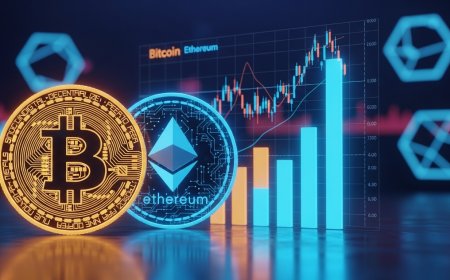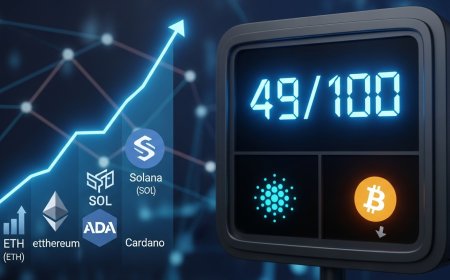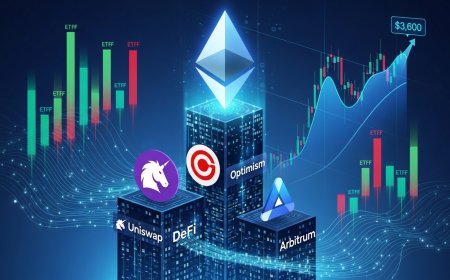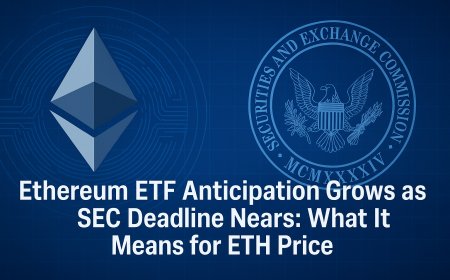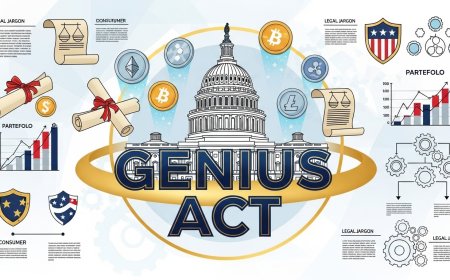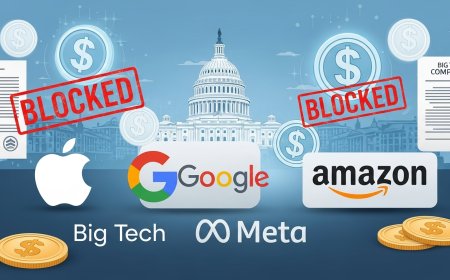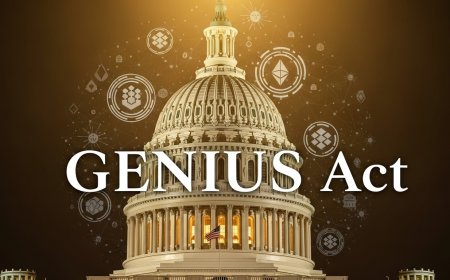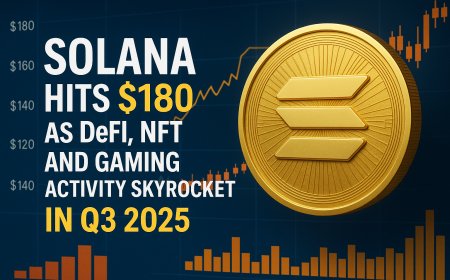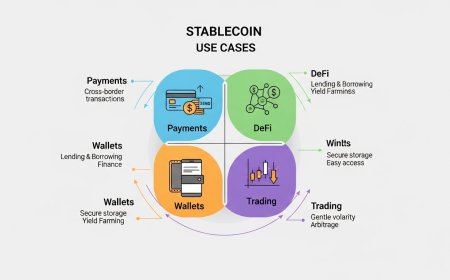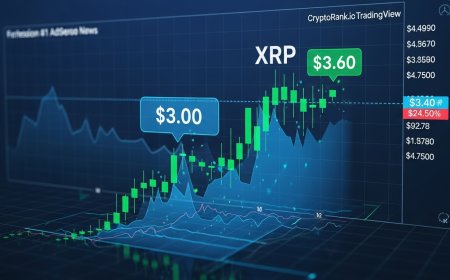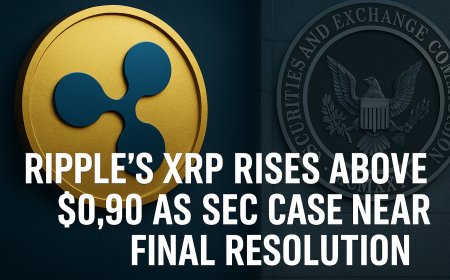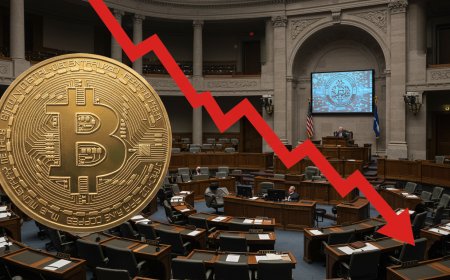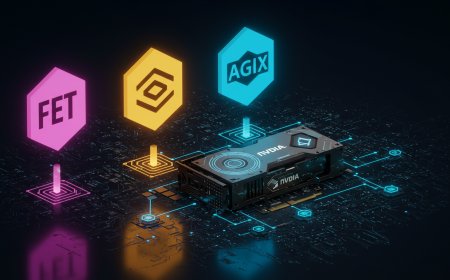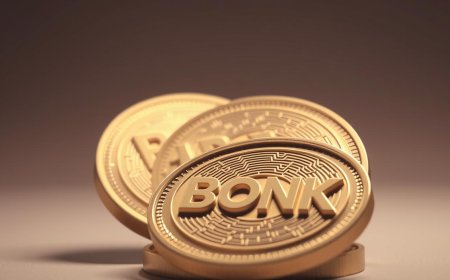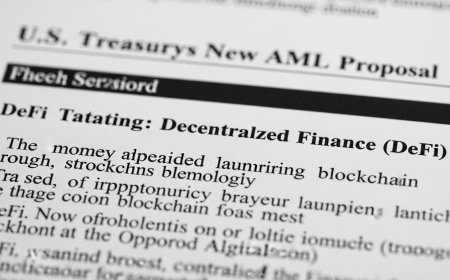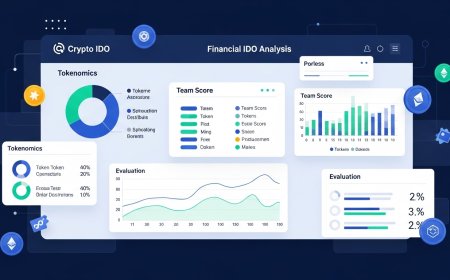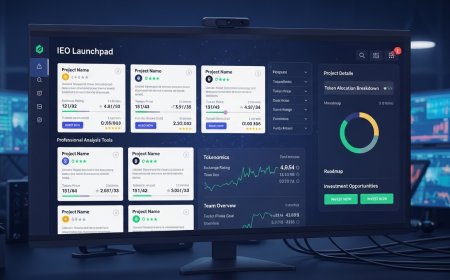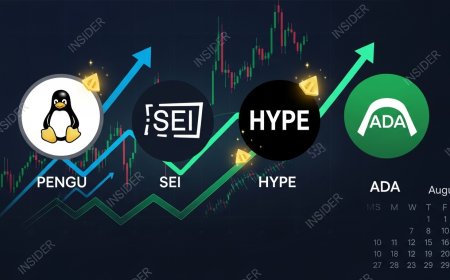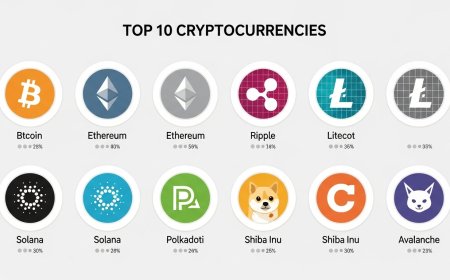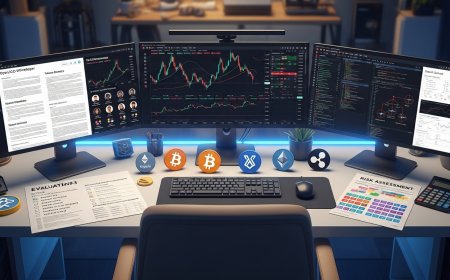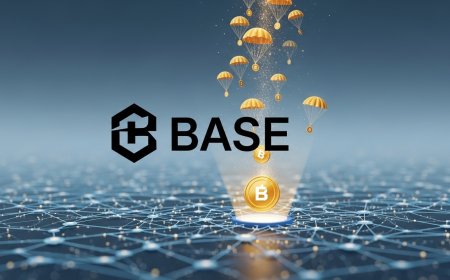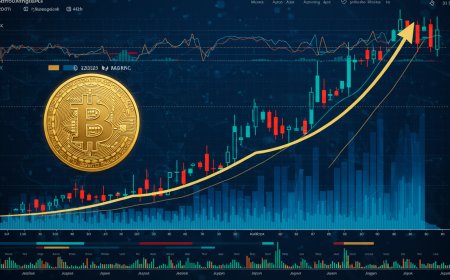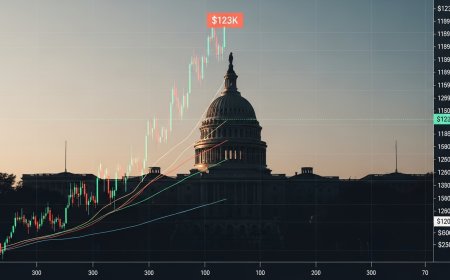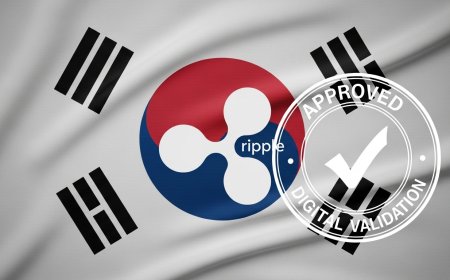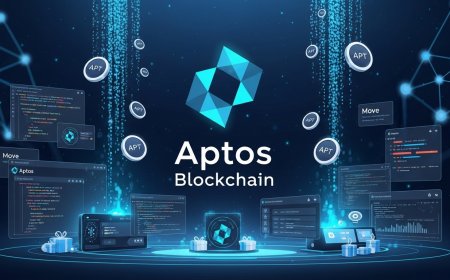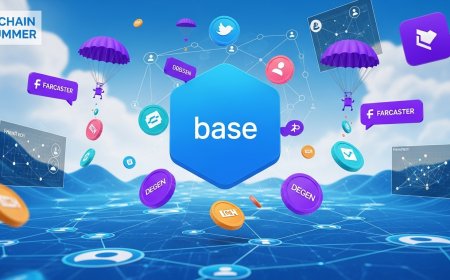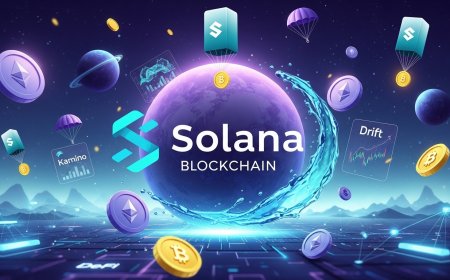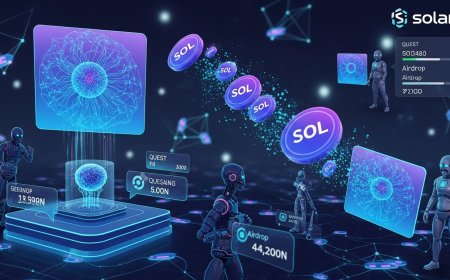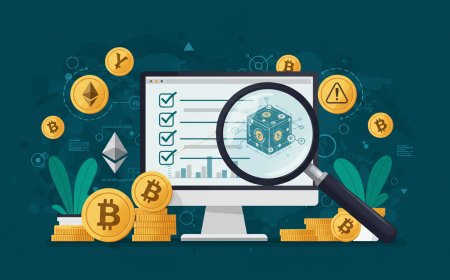How to Evaluate Crypto IDO Investments: Complete 2025 Analysis Guide
Master the art of IDO investment evaluation with our comprehensive guide. Learn proven frameworks to analyze tokenomics, assess project fundamentals, identify red flags, and manage risks in Initial DEX Offerings. Perfect for both beginners and experienced crypto investors. Learn how to evaluate crypto IDO opportunities like a pro. Our complete 2025 guide covers tokenomics analysis, team assessment, risk management, and proven investment strategies for Initial DEX Offerings.
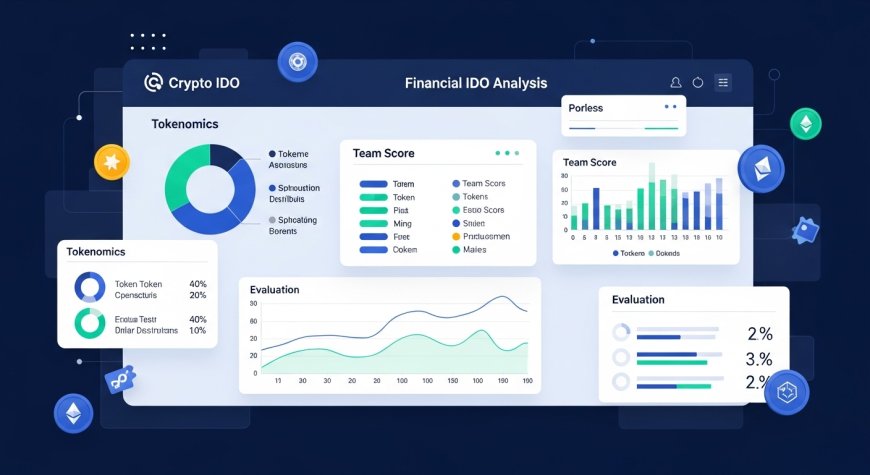
Introduction
Initial DEX Offerings (IDOs) have revolutionized cryptocurrency fundraising, generating over $2.4 billion in investment volume during 2024 alone. Unlike traditional initial coin offerings (ICOs) or initial exchange offerings (IEOs), IDOs offer immediate liquidity and decentralized trading from day one through platforms like PancakeSwap, Uniswap, and specialized launchpads.
The explosive growth of the IDO market has created unprecedented opportunities for early-stage crypto investments. However, with over 3,000 projects launching annually across various blockchain networks, distinguishing legitimate opportunities from speculative ventures requires sophisticated evaluation techniques and systematic due diligence processes.
This comprehensive 2025 guide provides both novice and experienced investors with professional-grade frameworks, analytical tools, and proven methodologies to assess IDO opportunities effectively while implementing robust risk management strategies. Whether you're exploring your first IDO investment or seeking to refine your existing evaluation process, this guide delivers actionable insights that can significantly improve your investment outcomes in this high-volatility market segment.
Understanding IDOs: The Fundamentals
What is an IDO?
An Initial DEX Offering represents a groundbreaking cryptocurrency fundraising method where new tokens launch directly on decentralized exchanges (DEXs) such as PancakeSwap, Uniswap, or SushiSwap. Most projects conduct their IDOs through established launchpads like DAO Maker, Polkastarter, BSCPad, or TrustPad, which provide essential vetting services, marketing infrastructure, and technical support throughout the launch process.
The IDO model has gained significant traction because it democratizes access to early-stage investments while providing immediate price discovery and liquidity. According to industry data, successful IDO projects have delivered average returns of 340% in their first month, though this comes with corresponding risks that require careful evaluation.
Key Characteristics of IDOs
IDOs offer several compelling advantages that have made them the preferred fundraising method for DeFi and Web3 projects. The immediate liquidity provision eliminates the lengthy lock-up periods common with traditional ICOs, allowing investors to trade tokens within hours of launch. This immediate price discovery mechanism helps establish fair market value more efficiently than private funding rounds.
The decentralized nature of IDOs ensures global accessibility, removing geographical restrictions and democratizing access to early-stage investments. Smart contract automation provides transparency in fund allocation, token distribution, and project milestone tracking, creating unprecedented accountability in crypto fundraising.
Additionally, the lower barrier to entry compared to venture capital rounds allows retail investors to participate in opportunities previously reserved for institutional players. However, this accessibility also requires investors to conduct their own due diligence rather than relying on institutional vetting processes.
The IDO Ecosystem
The modern IDO ecosystem comprises multiple interconnected layers that work together to facilitate successful token launches. Tier-1 launchpads like Polkastarter, DAO Maker, and GameFi serve as the primary gatekeepers, conducting initial due diligence, providing marketing amplification, and offering technical infrastructure for token distribution.
Decentralized exchanges form the trading backbone, with Uniswap dominating Ethereum-based launches while PancakeSwap leads Binance Smart Chain IDOs. Emerging platforms like TraderJoe (Avalanche) and SpookySwap (Fantom) are expanding opportunities across multiple blockchain ecosystems.
The infrastructure layer includes blockchain networks like Ethereum, Binance Smart Chain, Polygon, and Solana, each offering different cost structures and performance characteristics. Community engagement platforms including Discord, Telegram, Twitter, and specialized crypto forums facilitate communication, due diligence sharing, and investor coordination.
Supporting services encompass audit firms like CertiK and PeckShield, market makers providing liquidity, and analytics platforms offering real-time data and research insights. Understanding how these components interact helps investors identify quality projects and avoid potential pitfalls.
Project Fundamentals Analysis
Team Evaluation
The founding team represents the single most critical success factor in IDO investments, with studies showing that experienced teams increase project success rates by over 70%. Begin your evaluation by examining each team member's professional background, focusing on relevant experience in blockchain development, business operations, and industry-specific expertise.
Verify team credentials through multiple sources including LinkedIn profiles, GitHub contributions, previous project outcomes, and industry recognition. Look for teams with complementary skill sets spanning technical development, business strategy, marketing, and community building. The ideal team combines proven execution ability with deep domain expertise in their target market.
Pay particular attention to the team's commitment level and financial alignment with project success. Teams that have invested significant personal time and resources, maintain active communication with their community, and demonstrate consistent progress toward milestones typically indicate higher success probability.
Red flags include anonymous teams without compelling privacy reasons, frequent team member changes during development, lack of relevant technical expertise, or team members associated with previous project failures or controversial activities. Conversely, teams with successful exits, active open-source contributions, and strong industry networks represent positive indicators for potential success.
Problem and Solution Assessment
Successful IDO projects address genuine market inefficiencies or unmet needs rather than creating solutions in search of problems. The problem identification should be clearly articulated, quantifiable, and significant enough to support a sustainable business model with defensible competitive advantages.
Evaluate the total addressable market (TAM) using both top-down and bottom-up analysis approaches. Top-down analysis examines the overall market size and growth trends, while bottom-up analysis calculates potential revenue based on target customer segments and pricing strategies. Markets experiencing rapid growth, regulatory changes, or technological disruption often present the most compelling opportunities.
Assess the proposed solution's technical feasibility, scalability potential, and differentiation from existing alternatives. The solution should demonstrate clear value propositions for target users, with measurable benefits that justify adoption costs and switching barriers. Consider network effects, where increased adoption creates additional value for existing users, as these often drive sustainable competitive advantages.
Critical evaluation questions include: Is the problem large enough to support the projected valuation? Does the team have unique insights or capabilities that enable superior execution? Are there existing solutions that could easily replicate the proposed approach? How might market conditions or competitive responses affect the solution's viability?
Technology Evaluation
Technical architecture assessment requires examining the chosen blockchain network, consensus mechanisms, smart contract design, and overall system scalability. Projects building on established networks like Ethereum or Binance Smart Chain benefit from existing infrastructure and developer tools, while those choosing newer networks like Solana or Avalanche may offer performance advantages but face ecosystem maturity risks.
Review available technical documentation, including whitepapers, technical specifications, and architectural diagrams. High-quality projects provide comprehensive documentation that explains technical decisions, trade-offs, and implementation strategies. Open-source projects with active GitHub repositories, regular commits, and community contributions typically demonstrate higher technical credibility and transparency.
Evaluate the security posture through smart contract audits, testing procedures, and vulnerability management processes. Reputable audit firms like CertiK, ConsenSys Diligence, or Trail of Bits provide independent security assessments that identify potential vulnerabilities and implementation risks.
Consider the project's approach to scalability challenges, including transaction throughput, cost efficiency, and user experience optimization. Projects with clear scaling strategies, whether through Layer 2 solutions, cross-chain bridges, or innovative consensus mechanisms, demonstrate better preparation for growth challenges.
Assess the technical team's expertise through their previous contributions, published research, and community recognition within relevant technical domains. Strong technical teams typically maintain active engagement with developer communities and contribute to open-source projects beyond their primary focus.
Tokenomics Deep Dive
Token Distribution Analysis
Tokenomics represents one of the most critical factors determining long-term success. Analyze the token distribution across different stakeholder groups including founders, team members, advisors, investors, and the community. Healthy distribution typically allocates significant portions to community rewards, ecosystem development, and public participation.
Examine vesting schedules for team and investor tokens. Long vesting periods with gradual release schedules indicate long-term commitment and reduce the risk of immediate dumps. Be wary of projects where large percentages of tokens are unlocked at launch or have short vesting periods.
Utility and Value Accrual
Evaluate the token's utility within the project ecosystem. Strong tokens serve multiple purposes such as governance voting, staking rewards, transaction fees, or access to premium features. The value accrual mechanism should create sustainable demand for the token beyond speculative trading.
Consider whether the token utility is essential to the platform's operation or merely cosmetic. Tokens with deep integration into platform mechanics typically demonstrate better long-term value retention than those with superficial utility.
Supply Mechanics
Analyze the total supply, circulating supply at launch, and emission schedule. Deflationary mechanics such as token burns can support price appreciation, while high inflation rates may create downward pressure. Understand how new tokens enter circulation and the factors that might affect supply dynamics.
Evaluate the relationship between token supply and platform usage. Ideally, increased platform adoption should correlate with increased token demand or decreased supply through burning mechanisms.
Market Analysis and Positioning
Competitive Landscape
Conduct thorough competitive analysis to understand the project's positioning within its sector. Identify direct competitors, their market share, strengths, and weaknesses. Evaluate the project's differentiation strategy and competitive advantages.
Consider network effects and first-mover advantages in the specific niche. Some sectors benefit significantly from early adoption and community building, while others may favor later entrants with superior technology or user experience.
Market Size and Growth Potential
Assess the total addressable market and its growth trajectory. Consider both current market size and projected expansion based on industry trends, regulatory developments, and technological adoption. Projects targeting rapidly growing markets with strong fundamentals typically offer better risk-adjusted returns.
Evaluate market maturity and saturation levels. Emerging markets may offer higher growth potential but come with increased execution risk, while mature markets provide more predictable but potentially limited upside.
Technical Due Diligence
Code Quality Assessment
Review available source code for quality, security, and best practices. Look for comprehensive testing suites, proper documentation, and adherence to industry standards. Regular commit activity and multiple contributors often indicate healthy development processes.
Consider engaging third-party auditors or technical experts for complex projects. Smart contract audits by reputable firms provide additional assurance regarding security and functionality.
Security Evaluation
Assess the project's security posture including smart contract security, infrastructure protection, and data privacy measures. Review any completed security audits and their findings. Understand how the project addresses common vulnerabilities and attack vectors.
Evaluate the team's security expertise and their approach to ongoing security maintenance. Projects handling significant value should demonstrate robust security practices and incident response procedures.
Scalability and Performance
Examine the platform's scalability solutions and performance characteristics. Consider transaction throughput, latency, and cost efficiency. Evaluate how the project plans to handle increased user adoption and network congestion.
Assess the chosen blockchain's scalability limitations and the project's strategies for addressing them. Layer 2 solutions, cross-chain bridges, and other scaling approaches should be technically sound and practically implementable.
Financial Analysis
Funding and Valuation
Analyze the project's funding history, valuation progression, and use of funds. Reasonable valuations relative to comparable projects indicate more sustainable price appreciation potential. Excessive valuations may limit upside potential and increase downside risk.
Review the intended use of raised funds and the budget allocation across development, marketing, operations, and reserves. Responsible fund management with clear milestones and accountability measures suggests better execution prospects.
Revenue Model
Evaluate the project's revenue generation strategy and path to profitability. Sustainable business models with multiple revenue streams typically offer better long-term prospects than projects relying solely on token appreciation.
Consider the scalability of the revenue model and its alignment with token value accrual. Revenue sources should support token demand through buybacks, staking rewards, or other mechanisms that benefit token holders.
Financial Sustainability
Assess the project's runway and burn rate based on available funding and projected expenses. Projects should have sufficient funding to reach significant milestones and achieve revenue generation or additional funding opportunities.
Evaluate contingency planning and the team's ability to adapt to changing market conditions. Flexible business models and conservative financial planning provide better resilience during market downturns.
Community and Marketing Assessment
Community Engagement
Evaluate the size, quality, and engagement level of the project's community across platforms like Discord, Telegram, Twitter, and Reddit. Active, knowledgeable communities often correlate with project success and provide valuable feedback and support.
Assess community growth trends and organic versus paid engagement. Authentic community building typically results in sustained growth and meaningful interactions, while artificial growth may indicate underlying issues.
Marketing Strategy
Review the project's marketing approach, including content quality, influencer partnerships, and community building initiatives. Effective marketing should educate potential users about the project's value proposition while building genuine excitement and adoption.
Consider the marketing budget allocation and return on investment. Projects with clear marketing strategies and measurable outcomes typically achieve better user acquisition and retention rates.
Partnership Network
Examine strategic partnerships with other projects, institutions, and service providers. Quality partnerships can provide technical expertise, distribution channels, and credibility. However, partnerships should be mutually beneficial and aligned with the project's long-term objectives.
Evaluate the depth and exclusivity of partnership agreements. Meaningful partnerships typically involve integration, co-development, or revenue sharing rather than simple announcements or endorsements.
Risk Assessment Framework
Technical Risks
Identify potential technical risks including smart contract vulnerabilities, scalability limitations, and dependency risks. Consider the project's risk mitigation strategies and contingency plans. Technical risks can significantly impact project viability and token value.
Evaluate the project's approach to upgradeability and governance. While upgradeability provides flexibility for improvements, it also introduces centralization risks and potential security vulnerabilities.
Market Risks
Assess market-specific risks including regulatory uncertainty, competitive threats, and market adoption challenges. Consider how changing market conditions might affect the project's prospects and token performance.
Evaluate correlation risks with broader cryptocurrency markets and specific sector trends. Understanding these correlations helps in portfolio construction and risk management.
Execution Risks
Consider the team's ability to execute the roadmap successfully within projected timelines and budgets. Execution risks include technical delays, regulatory challenges, and competitive pressures that may affect project development.
Assess the project's adaptability and ability to pivot if initial strategies prove unsuccessful. Flexible teams with strong problem-solving capabilities typically navigate challenges more effectively.
Regulatory Risks
Evaluate regulatory risks in relevant jurisdictions, particularly for projects targeting specific geographical markets or regulatory frameworks. Consider how potential regulatory changes might affect project operations and token classification.
Assess the project's legal structure and compliance efforts. Projects with proactive legal strategies and compliance frameworks typically face fewer regulatory challenges.
Due Diligence Checklist
Essential Documentation Review
Obtain and thoroughly review the project's whitepaper, technical documentation, tokenomics papers, and legal disclosures. These documents should provide comprehensive information about the project's vision, technology, and business model.
Verify the accuracy and consistency of information across different sources. Discrepancies or vague explanations may indicate underlying issues or lack of clarity in project planning.
Team Verification
Conduct background checks on key team members, advisors, and partners. Verify their professional experience, previous projects, and industry reputation. Look for any red flags such as involvement in failed projects or questionable practices.
Assess team cohesion and communication effectiveness. Teams with clear roles, good communication, and shared vision typically execute more effectively than those with internal conflicts or unclear responsibilities.
Financial Verification
Review financial projections, funding utilization plans, and budget allocations. Ensure that financial planning is realistic and aligned with project milestones. Consider engaging financial experts for complex projects with significant funding requirements.
Verify claims about partnerships, revenue, and user metrics. Independent verification provides additional confidence in the project's representations and progress claims.
Legal and Compliance Review
Assess the project's legal structure, regulatory compliance efforts, and potential legal risks. Consider engaging legal experts familiar with cryptocurrency regulations in relevant jurisdictions.
Review token classification, securities law implications, and compliance with applicable regulations. Proper legal structuring reduces regulatory risks and provides clearer token holder protections.
Red Flags and Warning Signs
Team-Related Red Flags
Be cautious of anonymous teams without compelling reasons for anonymity, team members with histories of involvement in failed or fraudulent projects, and teams lacking relevant experience or expertise in their claimed areas of competence.
Watch for high team member turnover, internal conflicts, or lack of transparency in team communications. These issues often indicate deeper problems with project management and execution capabilities.
Project-Related Warning Signs
Avoid projects with vague or unrealistic promises, plagiarized whitepapers or documentation, and lack of clear technical development or progress. Projects without working products or prototypes face significantly higher execution risks.
Be wary of projects that overpromise on timelines, claim revolutionary breakthroughs without supporting evidence, or demonstrate poor communication and transparency with their communities.
Financial Red Flags
Exercise extreme caution with projects featuring unrealistic tokenomics, excessive team or insider allocations, and short or absent vesting periods for team tokens. These characteristics often lead to significant selling pressure after launch.
Avoid projects with unclear fund utilization plans, excessive fundraising relative to development needs, or lack of financial transparency and accountability measures.
Market-Related Warning Signs
Be cautious of projects launching during market euphoria with extremely high valuations, following market trends without clear differentiation, or targeting oversaturated markets without compelling competitive advantages.
Watch for projects with artificial community engagement, paid influencer campaigns without disclosure, or marketing that focuses on price rather than utility and development progress.
Investment Strategies and Risk Management
Portfolio Allocation
Develop a disciplined approach to IDO investments within your overall cryptocurrency portfolio. IDOs should typically represent a small percentage of total holdings due to their high-risk nature. Consider your risk tolerance, investment timeline, and diversification goals.
Diversify across different sectors, development stages, and risk profiles within your IDO allocation. This approach helps manage concentration risk while capturing opportunities across various market segments.
Entry and Exit Strategies
Develop clear entry criteria based on your evaluation framework and risk parameters. Consider different participation strategies such as participating in private rounds, public IDO launches, or secondary market purchases after launch.
Plan exit strategies in advance, including profit-taking levels, stop-loss triggers, and holding period objectives. Having predetermined exit criteria helps maintain discipline during volatile market conditions.
Risk Monitoring and Management
Implement ongoing monitoring processes to track project development, market conditions, and portfolio performance. Regular review helps identify changing risk profiles and opportunities for portfolio adjustments.
Use position sizing, stop-losses, and diversification to manage downside risk. Consider the correlation between different holdings and adjust position sizes accordingly to maintain appropriate risk levels.
Long-term Perspective
While IDOs can provide significant short-term gains, focus on projects with strong long-term fundamentals and sustainable business models. This approach typically provides better risk-adjusted returns over time.
Consider the entire project lifecycle from launch through maturity. Projects that successfully navigate early challenges and achieve meaningful adoption often provide the best long-term returns.
Tools and Resources
Research Platforms
Utilize comprehensive research platforms like Messari, CoinGecko, and DeFiPulse for market data, project analytics, and comparative analysis. These platforms provide standardized metrics and historical data for informed decision-making.
Leverage social sentiment analysis tools and community monitoring platforms to gauge market sentiment and identify emerging trends or concerns.
Technical Analysis Tools
Use blockchain explorers, code repositories, and audit reports for technical due diligence. Platforms like Etherscan, GitHub, and audit databases provide transparent access to project technical information.
Consider subscription-based research services that provide professional analysis and due diligence reports on IDO opportunities.
Community Resources
Participate in reputable cryptocurrency communities, forums, and social media groups focused on IDO analysis and discussion. These communities often provide valuable insights, due diligence sharing, and early project identification.
Follow credible analysts, researchers, and industry experts who specialize in IDO evaluation and early-stage project analysis.
Risk Management Tools
Utilize portfolio tracking and risk management tools to monitor your IDO investments and overall portfolio performance. These tools help maintain discipline and identify when rebalancing is necessary.
Consider using automated trading tools for profit-taking and stop-loss execution, particularly for highly volatile IDO investments that may experience rapid price movements.
Conclusion
Successfully evaluating IDO opportunities requires a systematic approach combining fundamental analysis, technical due diligence, and risk management. While the potential for significant returns exists, the high-risk nature of early-stage projects demands careful evaluation and disciplined investment practices.
The cryptocurrency and DeFi landscape continues evolving rapidly, with new opportunities and risks emerging regularly. Staying informed about market trends, regulatory developments, and technological innovations remains crucial for successful IDO investing.
Remember that past performance doesn't guarantee future results, and the cryptocurrency market's volatile nature means that even well-researched investments can experience significant losses. Always invest only what you can afford to lose and consider consulting with financial professionals when making significant investment decisions.
The key to long-term success in IDO investing lies in maintaining a balanced approach that combines thorough research, disciplined risk management, and realistic expectations about both potential returns and inherent risks. By following the frameworks and methodologies outlined in this guide, investors can make more informed decisions and better navigate the exciting but challenging world of IDO opportunities.
Disclaimer: This guide is for educational purposes only and does not constitute financial advice. Cryptocurrency investments carry significant risks, and past performance does not guarantee future results. Always conduct your own research and consider consulting with qualified financial professionals before making investment decisions.
What's Your Reaction?
 Like
0
Like
0
 Dislike
0
Dislike
0
 Love
0
Love
0
 Funny
0
Funny
0
 Angry
0
Angry
0
 Sad
0
Sad
0
 Wow
0
Wow
0

